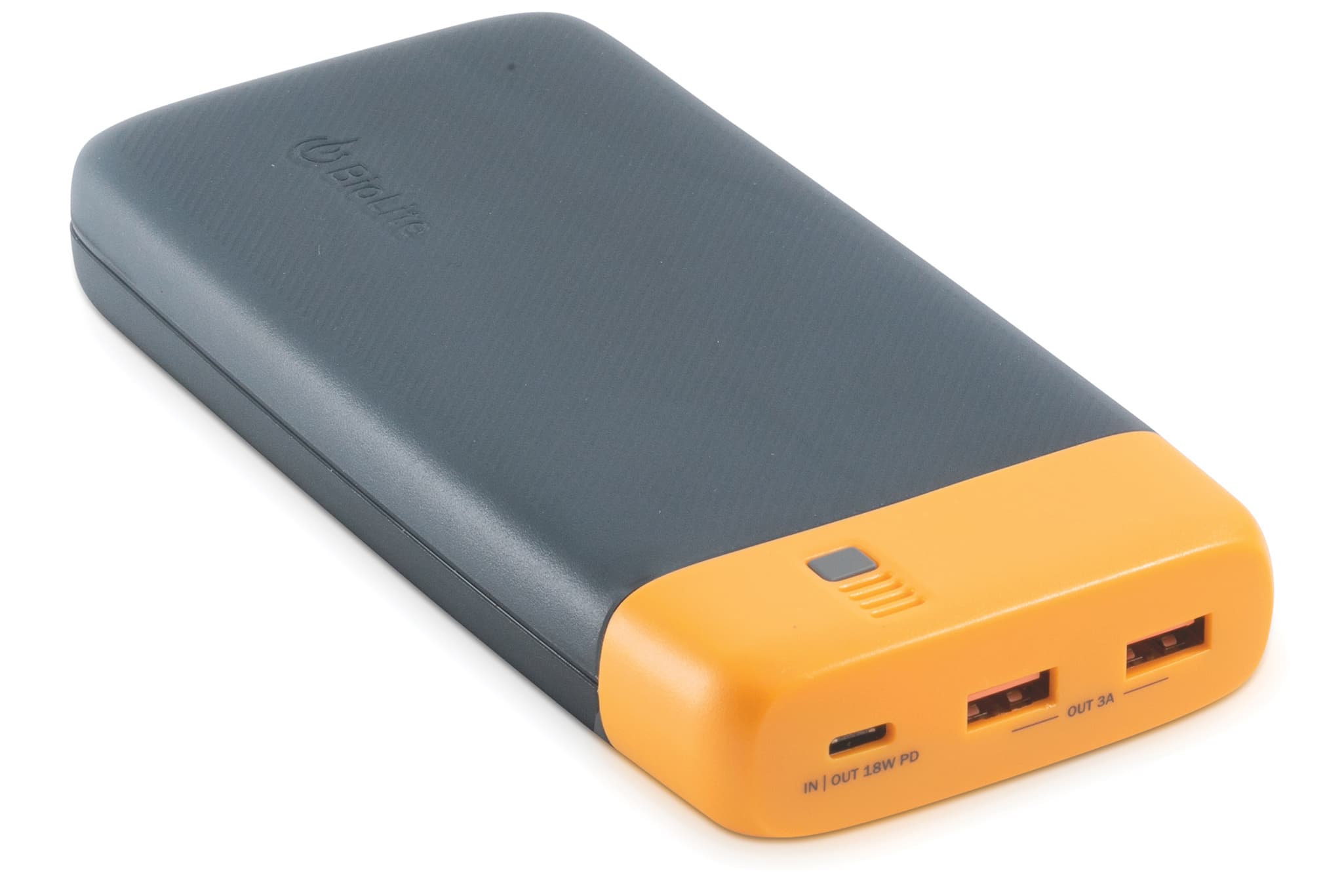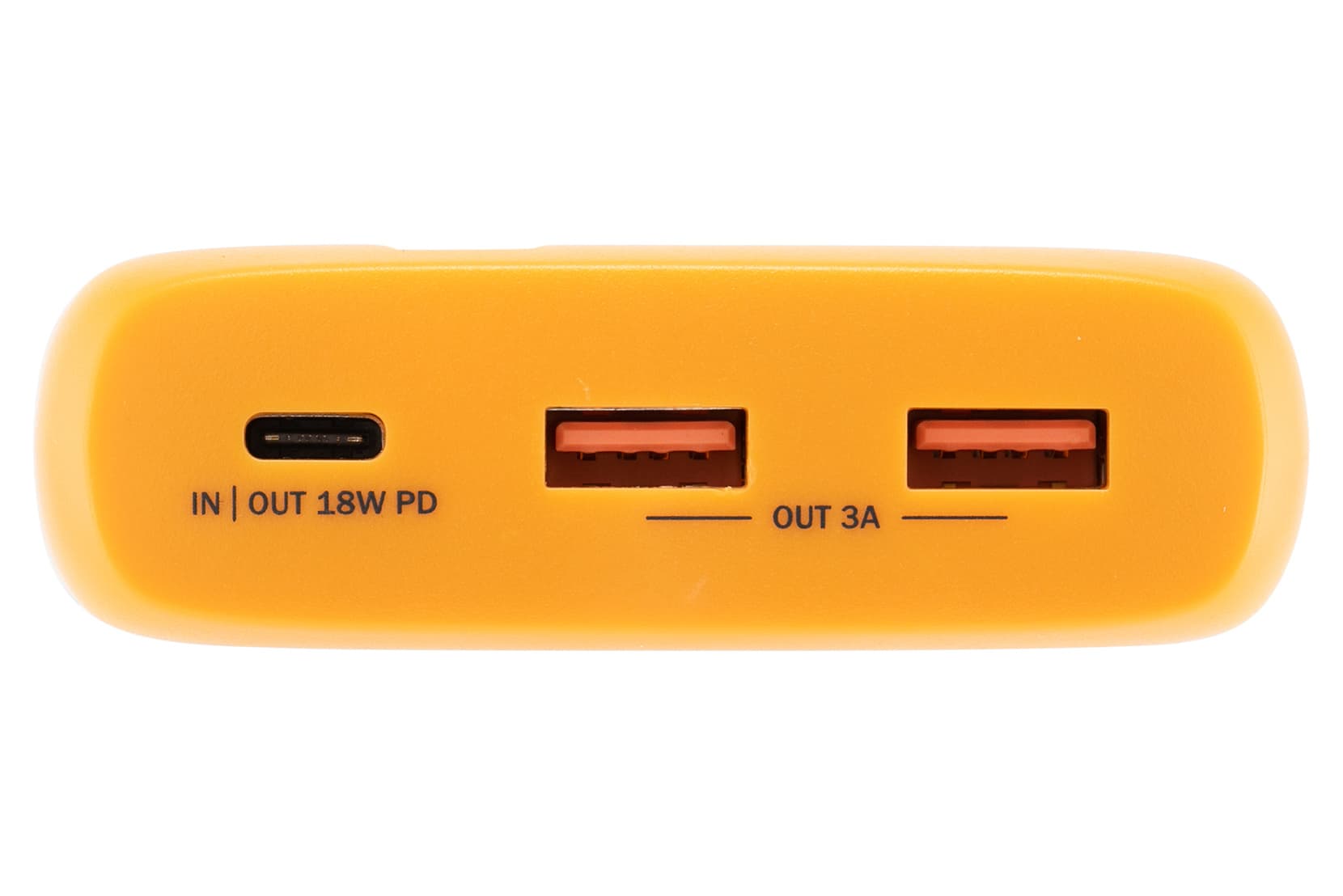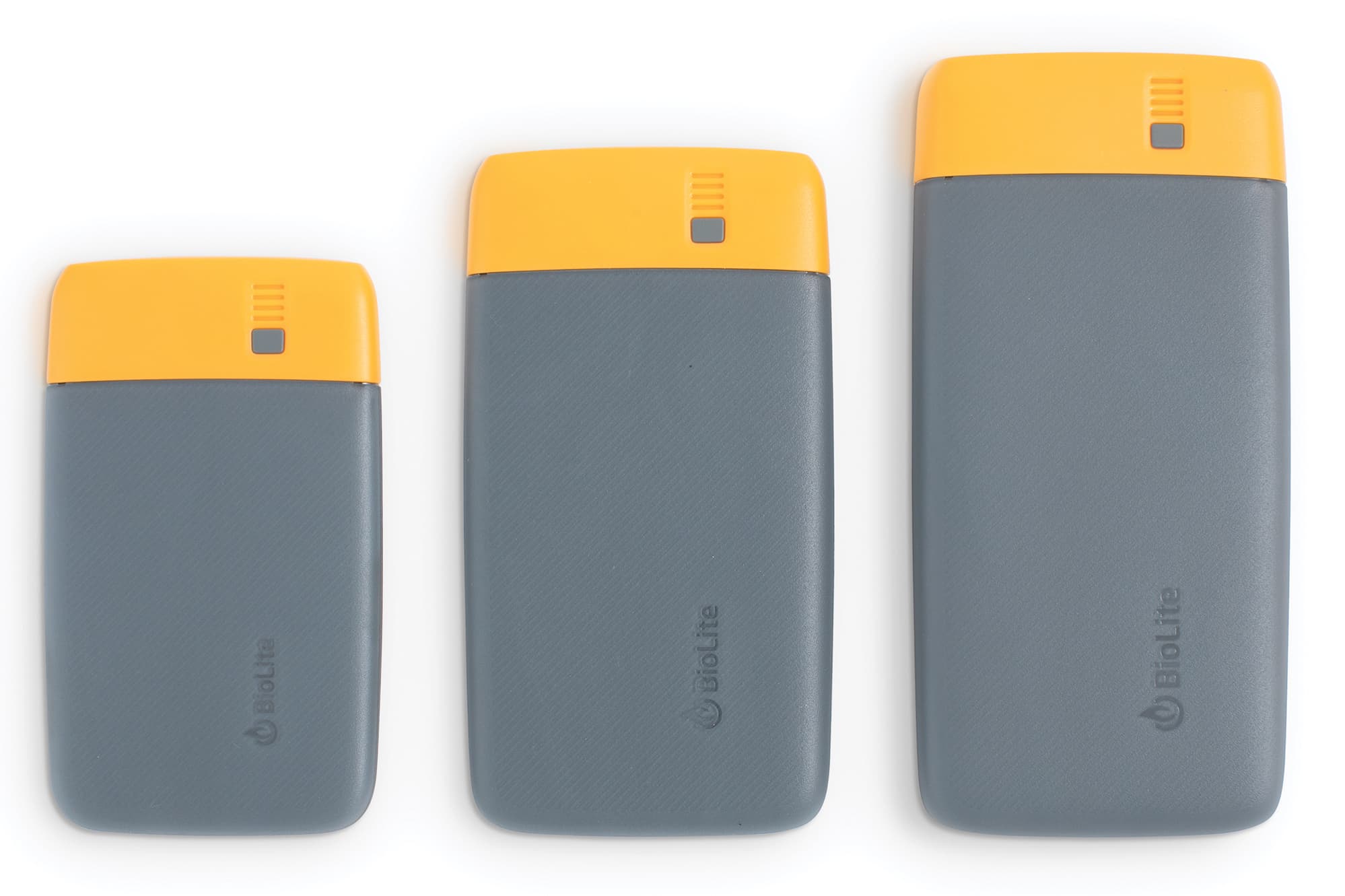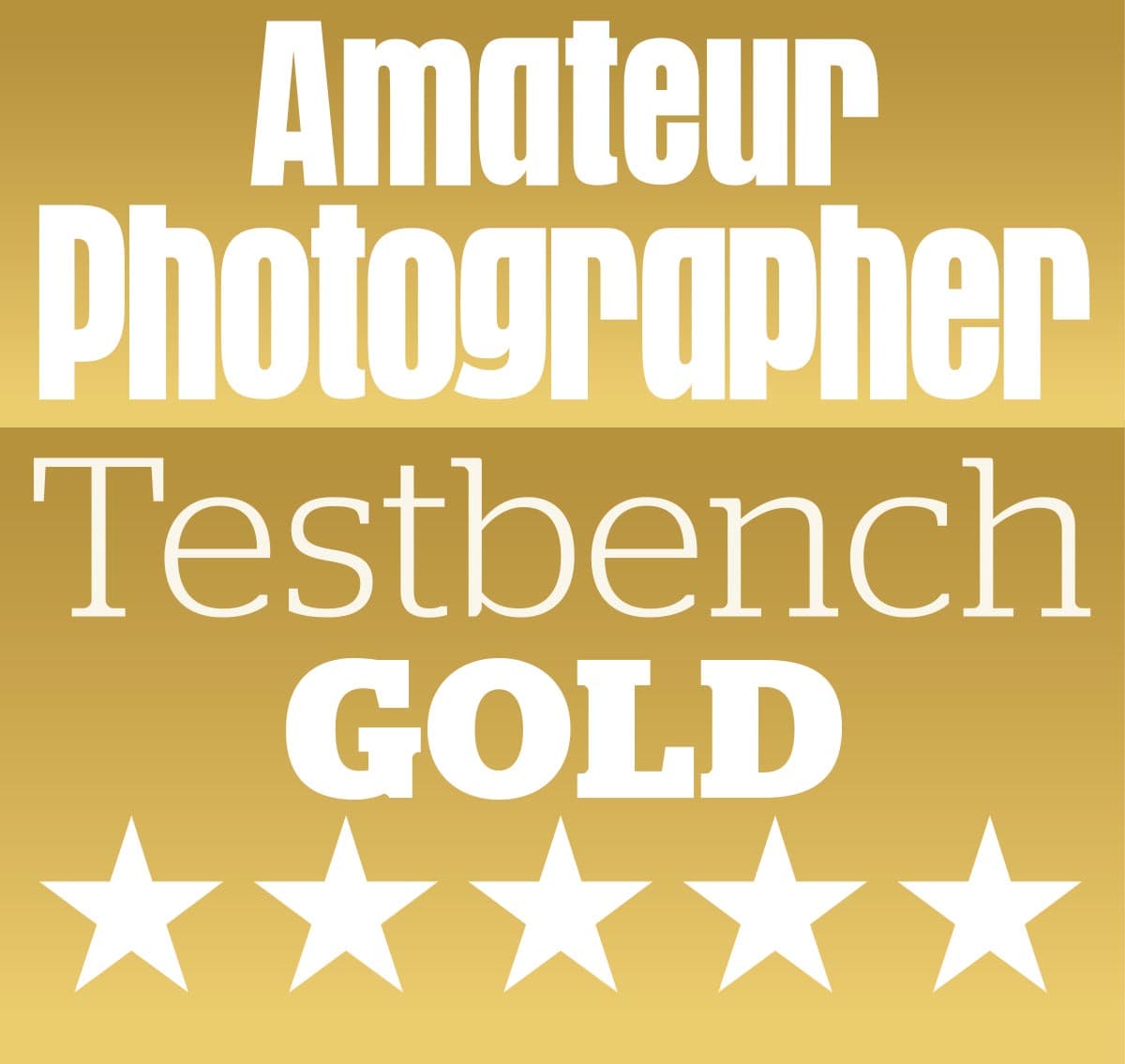Biolite Charge 80 PD at a glance:
- 20,000mAh Li-ion power bank
- 1 USB-C power delivery (PD) port
- 2 USB-A ports
- 170 x 82 x 25mm
- 465g
- uk.bioliteenergy.com
If you own a smartphone then the chances are that you either own, or wished you owned, a power bank to give its battery a boost towards the end of a busy day. Also, the move towards in-camera battery charging via USB makes these portable power sources even more useful.
Inside the Biolite Charge 80 PD is a 20,000mAh Li-ion battery, which means it’s more powerful than the average power bank. Indeed as well as smartphones and cameras, it can even be used to charge to power some laptops. Of course that battery capacity also means that the Charge 80 PD is bigger and heavier than most power banks, but at 170 x 82 x 25mm and 465g, it’s not excessive. It has a durable-feeling construction with a plastic shell that can take a few knocks.

The grey button reveals the remaining battery life of the Biolite Charge 80PD
Biolite Charge 80 PD key features:
- In/Out: This USB-C port can be used to charge the power bank or charge a connected device
- Life indicator: Pressing this button illuminates the 4-bar battery life indicator
- Cold climates: Biolite claims the Charge 80 PD operates at down to -20°C
- Charge time: 5-hour charging with a USB-C connection
Biolite supplies the Charge 80 PD with a short USB-A to USB-C cable, which connects to the unit’s USB-C port to charge the internal battery. With an 18W USB-C connection it takes around 5 hours to charge it fully.
Alongside the USB-C port there are two USB-A ports that can also be used to charge devices. These run at up to 15W using the Quick Charge 3.0 protocol, making them three times faster than standard USB-A ports.

The Biolite Charge 80 PD is charged using a supplied USB-A to USB-C cable
But how does all this translate in photographic terms? Well, using the USB-C port, I was able to charge the Fujifilm NP-W1126S battery that’s supplied with the Fujifilm X-T3, X-Pro3, X-E4 and X-S10 (and more) nine and a half times before the Biolite Charge 80 PD was depleted. It took around an hour for the Biolite Charge 80 PD to fully recharge the battery in the Fujifilm X-S10.
Conveniently, the Biolite Charge 80 PD didn’t just charge the battery while the camera was out of use, it also enabled the X-S10 to be used with a flat battery. Naturally, in the course of a day, you’re likely to need to charge multiple devices so it’s good news that charging my 12-inch MacBook from 7% to 97% only depleted the Charge 80 PD by around 25%.
Want something smaller?
Biolite also makes the Charge 20 PD (£34.99) and Charge 40 PD (£49.95) with 6,000mAh and 10,000mAh power respectively. Naturally this means that their output is reduced so you get fewer recharges, but at 128 x 75 x 14mm and 165g for the Charge 20 PD and 150 x 81 x 17mm and 265g for the 40, there’s a nice reduction in size and weight to go with the cost savings.

From left to right, the Biolite Charge 20 PD (£34.99), Biolite Charge 40 PD (£49.95) and the Biolite Charge 80 PD (£69.95)
Biolite Charge 80 PD: Our Verdict
Provided that you have the correct cable, the Biolite Charge 80 PD can dramatically extend the shooting time available to you if you have just one camera battery. And, with camera batteries typically costing in the region of £40-£60, multiple recharges soon make the Biolite Charge 80 PD seem a wise investment.









